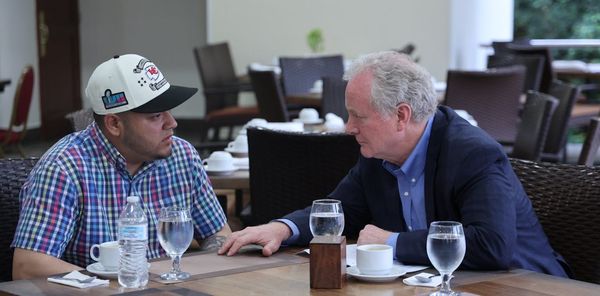Leaders from around the world gathered in Washington, DC, earlier this month and pledged a combined total of US$12 billion to support the Global Fund to Fight Aids, Tuberculosis and Malaria. This is the largest sum ever committed to the Global Fund, an international financing institution created in 2002 to fight three of the deadliest pandemics in the world.
As someone who has worked in the malaria field for over 30 years, I have witnessed the transformative impact of the Global Fund. Just last week, the World Health Organisation released new data showing that malaria deaths in children have been cut in half since 2000—a decrease that would not have been possible without the Global Fund. Though the malaria community has many generous partners that have worked to achieve unprecedented progress over the past decade, an incredible two-thirds of all donor funding to achieve this progress comes from the Global Fund. As a result, in a relatively short period of time, countries have gone from having health systems overburdened by malaria to being able to lay the groundwork to eliminate the disease altogether—something that would have seemed unthinkable just a few decades ago.
What is uniquely remarkable about this year's round of pledges is that it includes financial commitments from a number of small and low-income countries, including countries where malaria, HIV/Aids, or TB still exact a heavy toll—like Kenya, Malawi, Nigeria, and Namibia. These countries are showing a growing capacity to build on Global Fund investments by providing national resources to fight disease. Countries are also increasingly able to purchase lifesaving tools like medicines, diagnostics, and bednets to support their own programs. Of particular note this year are Zambia, which has invested $24 million to fight malaria, and South Africa, which has invested $22 million. This is indicative of national governments beginning to experience tangible benefits from programs that combat malaria: healthier communities are producing stronger economies.
However, continued success must not be taken for granted. Infectious disease control is not an inherently stable state and early successes can be alarmingly fragile. In the case of malaria, if we do not continue to make progress against the disease, we run the risk of losing the achievements we have already made. The malaria parasite is highly adaptive, and history has shown that the disease can resurge within months of relaxing control efforts, often to levels equal to or worse than before. Since 1930, the disease has resurged 75 times in countries where it had previously been under control; nearly all of these resurgences have been linked to decreases in resources and scaling back of malaria programs.
So while there is much to celebrate, the evidence is clear that a well-funded Global Fund is critical to be able to finish the work that has been started and end the threat of malaria – and HIV/Aids and TB– once and for all. To be successful, the global community must work to maximise the impact of pledged funds, while documenting the great value for money we are getting from these investments. We must increase the strategic targeting of funding to programs with the greatest promise of health impact and partner with national governments and others to demonstrate that these national programs are well-designed and managed. In short, we must work harder and smarter, building the evidence base as we go—to ensure that the Global Fund's next replenishment is even more robust and countries continue to invest in effective health programming.
Let's join countries in their ambitious vision and be the generation that ends malaria, HIV/Aids, and TB, once and for all.
To learn more about PATH's work on malaria, please visit us here.
All content on this page is produced and controlled by PATH







